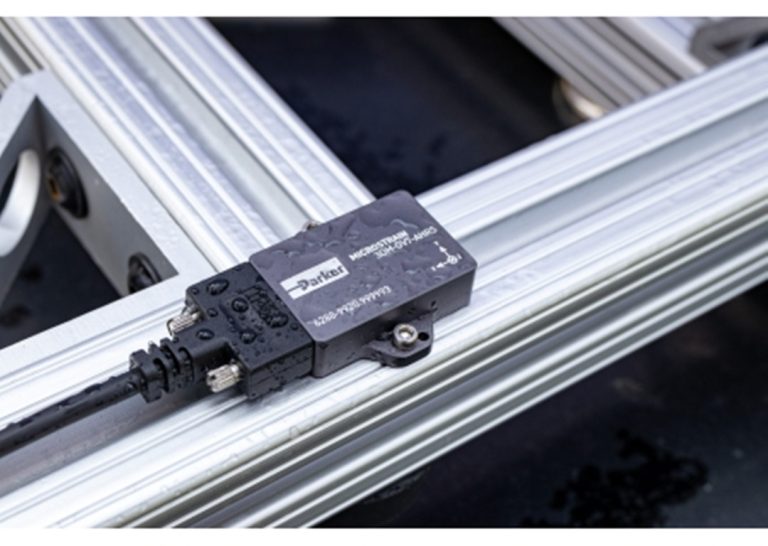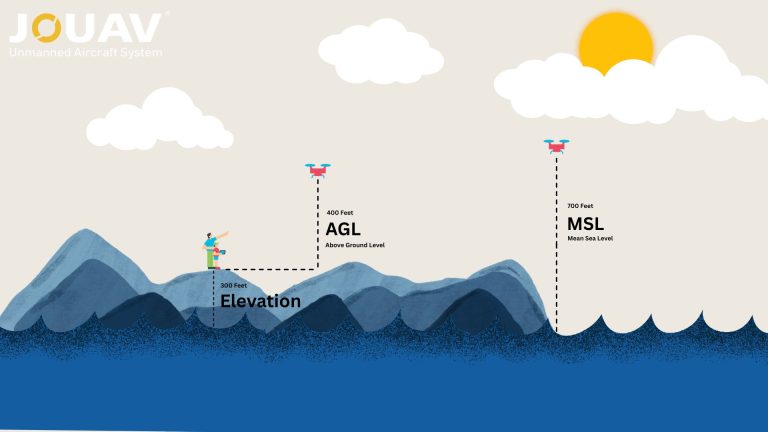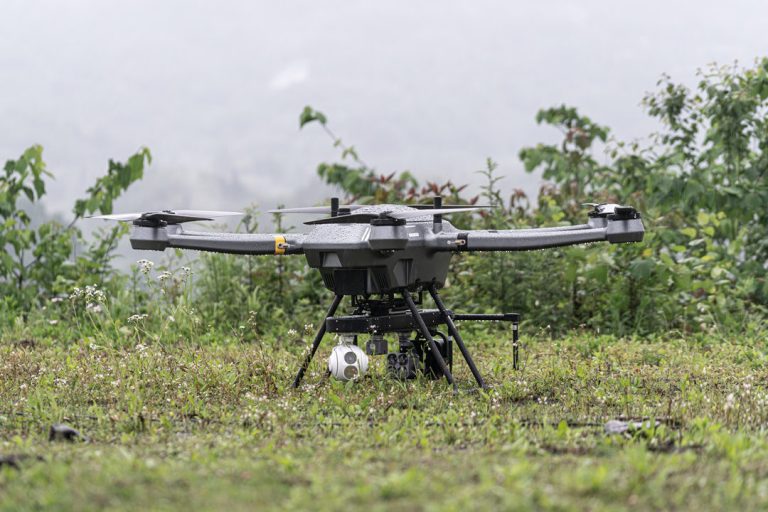The Ultimate Guide to GPS Drones in 2025
GPS technology has brought a new level of precision and reliability to drones, making them more capable and versatile than ever before. By integrating GPS, drones can navigate accurately, return to home automatically, and provide real-time tracking.
This precision is invaluable for tasks like aerial mapping, surveying, and photography, where exact positioning is crucial. GPS also enhances safety with features like geofencing and obstacle avoidance, protecting both the drone and its surroundings.
In this guide, we'll dive into the world of GPS drones, explaining how they work, the benefits they offer, and the different types of GPS drones available on the market.
What is a GPS Drone?
A GPS drone is an unmanned aerial vehicle (UAV) equipped with a Global Positioning System (GPS) module. This advanced technology enables the drone to determine its precise geographical location by connecting to a network of satellites orbiting the Earth.
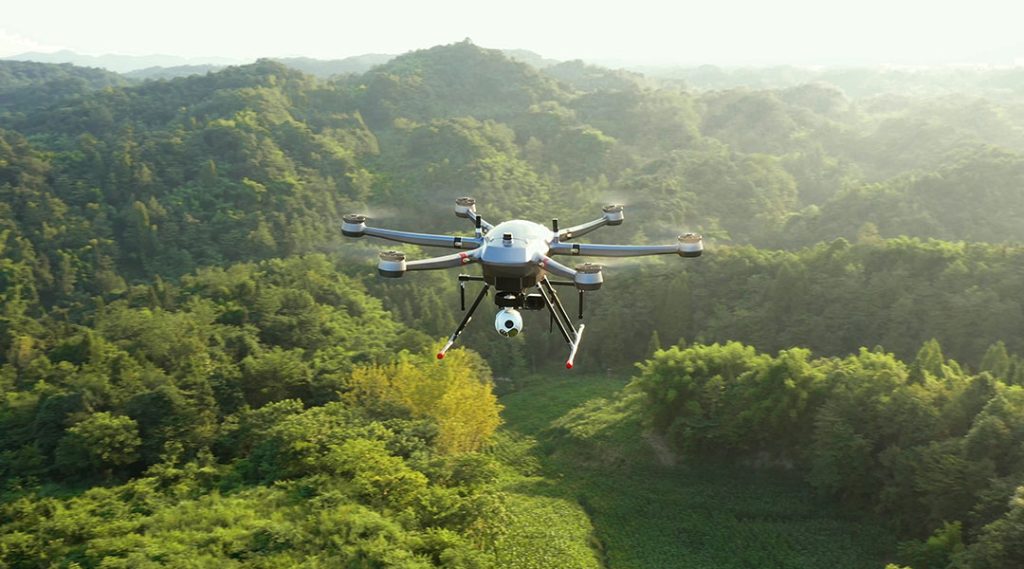
How GPS Works on Drones?
The GPS system operates through a network of satellites orbiting the Earth, which transmit signals to the drone's GPS module. Here’s a detailed look at the process:
- Satellite Signals: The Earth is surrounded by numerous GPS satellites that continuously send out signals. These signals contain information about the satellite's location and the exact time the signal was transmitted.
- Signal Reception: The GPS module inside the drone acts as a receiver for these signals. It picks up signals from multiple satellites simultaneously. The more satellites it can connect to, the more accurate the positioning.
- Triangulation: The GPS module calculates the time it takes for each signal to travel from the satellite to the drone. By measuring this time, the module can determine the distance to each satellite.
- Position Calculation: Using the distances from at least four satellites, the GPS module triangulates the drone's exact location in three-dimensional space (latitude, longitude, and altitude).
What Are the Advantages of GPS Drones?
GPS technology has completely transformed the capabilities of drones, making them more reliable and efficient in various tasks. Here's why GPS is such a game-changer:
1. Accurate Navigation
GPS empowers drones with pinpoint accuracy in navigation, ensuring precise movement and stable positioning. This accuracy is paramount for tasks demanding high-quality aerial video and photography.
Additionally, in applications like drone photogrammetry, where precise mapping is crucial, GPS-enabled drones excel in delivering accurate results.
2. Autonomous Flight Capabilities
One of the standout features of GPS drones is their ability to execute autonomous flights along pre-programmed routes. This functionality proves invaluable in a myriad of tasks such as inspection, crop monitoring, and search or rescue operations.
By following programmed routes autonomously, drones can maintain specific patterns, enhancing their effectiveness and efficiency in completing tasks.
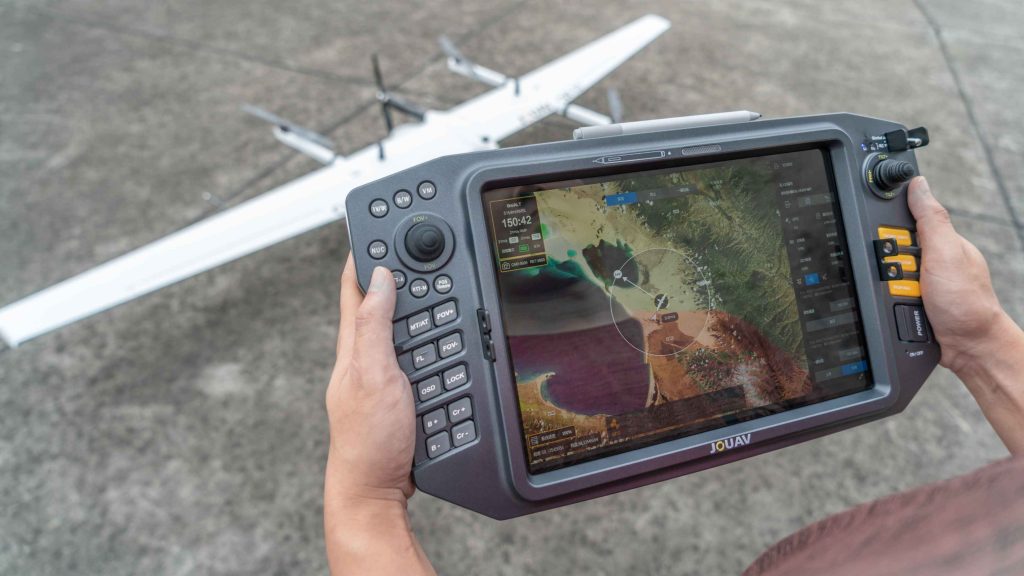
3. Safe Return-to-Home Functionality
In scenarios where drones lose connection with the remote control or encounter low battery levels, GPS technology acts as a safety net. It enables drones to automatically navigate back to their designated take-off point, ensuring a safe return even in challenging situations. This "return-to-home" feature not only safeguards the drone but also protects valuable equipment and data.
4. Geofencing for Limitations and Safety
GPS facilitates the creation of virtual geographic boundaries known as geofencing. These boundaries can be strategically set to restrict a drone's flight area, preventing it from straying too far or entering restricted zones.
Geofencing is particularly beneficial in ensuring compliance with regulations and avoiding sensitive areas such as Special Protection Areas (SPAs), Special Areas of Conservation (SACs), and Sites of Community Importance (SCIs).
7 Best GPS Drones For Sales
Selecting the right GPS drone can significantly enhance your flying experience and meet various needs, from beginner-friendly options to professional-grade drones. Here are some of the best GPS drones across different categories:
Beginner GPS Drones - DJI Mini 4 Pro
The DJI Mini 4 Pro is a compact, beginner-friendly drone that's perfect for new pilots or those on a budget. Its small size, weighing under 249 grams, helps it bypass many regulations and makes it highly portable, easily fitting into a bag. The drone comes with flight tutorials and built-in safeguards, including obstacle sensing, making it an ideal option for first-time users. The JPEG images are vibrant and suitable for social media and small prints, providing decent quality for casual photography.
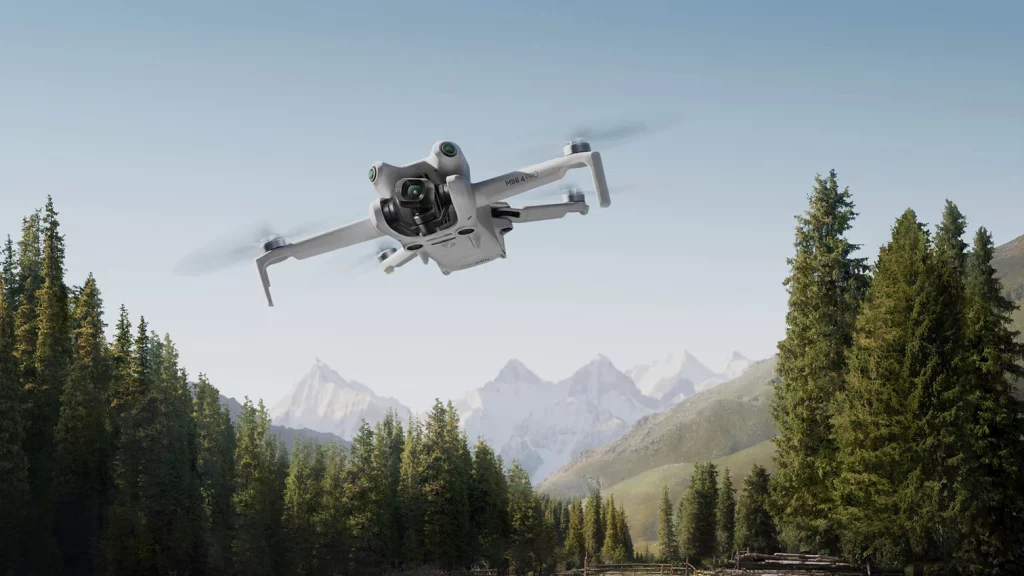
However, the Mini 4 Pro's lower price point means some compromises in image quality. The photos are comparable to those from a good smartphone rather than a high-end camera, showing muted details and grain at 100% zoom. The 48-megapixel mode exhibits significant noise, making the 12-megapixel files preferable in most situations. Despite these limitations, the DJI Mini 4 Pro is an excellent starter drone for the price.
PROS
- Compact and under 249 grams
- Easy for beginners to use
- Obstacle detection
- Manual exposure controls and RAW shooting
- Vibrant JPEGs
- Budget-friendly
CONS
- Smartphone-like image quality with grain
- 12-megapixel mode is cleaner than the 48-megapixel mode
GPS Drones Under $200 - Potensic Atom SE
The Potensic Atom SE offers significant improvements in quality and specs, positioning it as a competitor to the DJI Mini 2 SE. This beginner-friendly drone features real radio control linked to your phone via cable, rather than Wi-Fi, enhancing its operational range. It comes with high-quality accessories, including an extra battery and a case similar to those in the DJI Fly More kit, all without an increased price tag.
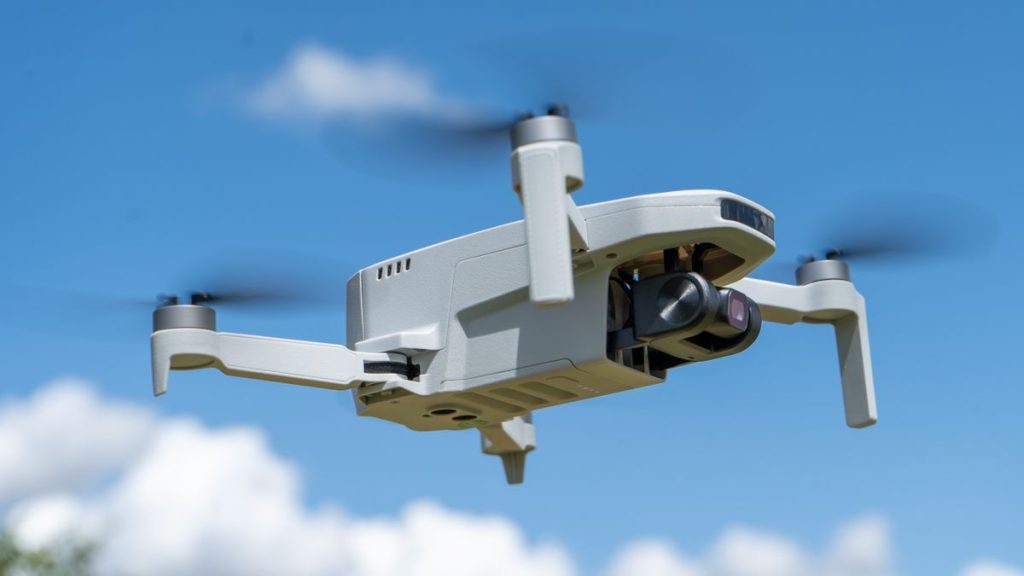
While Potensic is known for budget-friendly drones, the Atom SE makes one notable concession compared to DJI's models: it lacks a 3-axis gimbal, relying instead on electronic stabilization. Despite this, the electronic stabilization is effective, although the absence of a gimbal remains the main differentiator. For beginners evaluating their first drone purchase, deciding between spending more on a gimbal or opting for the Potensic Atom SE’s bundle is key.
PROS
- Great build quality for the price
- Sub-250g weight
- Easy to use
CONS
●Limited camera control
●No collision avoidance
●Sensitive controls
GPS Drone with 4K Camera - Holy Stone HS360S
The Holy Stone HS360S, though not a household name, offers a 2.5K camera in a small, foldable design for $269, positioning itself as an appealing option among budget drones. It promises portability and ease of use with features like two batteries, extra propellers, and USB-C charging for flight batteries. The drone’s compatibility with both Android and iOS phones adds to its convenience, aiming to provide a decent entry-level experience for casual drone users.
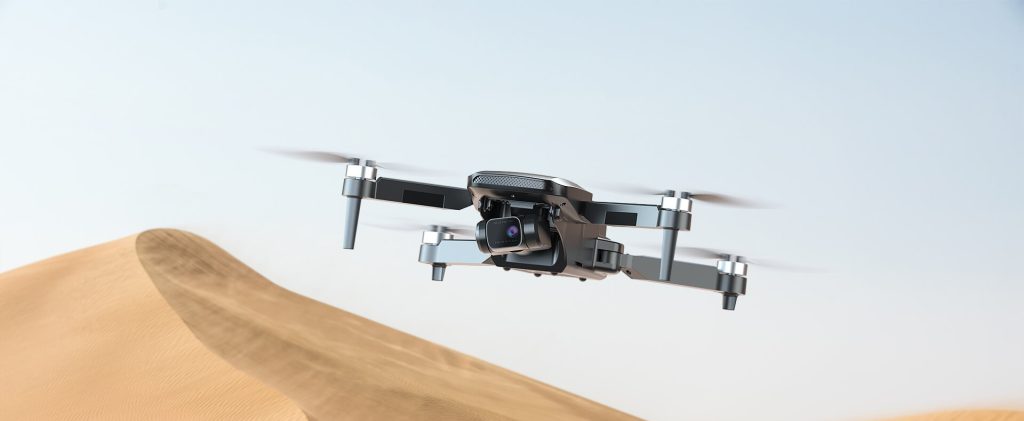
However, the Holy Stone HS360S falls short in several critical areas. Its flight stability is questionable, often wobbling and drifting during flight. The camera, despite its 2.5K resolution, produces pixelated videos and stills, failing to meet the expectations set by its specifications. Additionally, the battery life estimates are unreliable, which can lead to unexpected interruptions during flight. These drawbacks make the HS360S a less desirable option despite its attractive price point and portable design.
PROS
- Compatible with Android and iOS phones
- Comes with a zippered carrying case
- Includes two batteries and extra propellers
- Cable-free connection to smartphone app
- USB-C charging for flight batteries
CONS
- Poor image and video quality
- Requires FAA registration due to weight
- Unreliable battery life estimates
- Wobbles and drifts during flight
- Limited transmission range
- Low construction quality
Mini GPS Drones with Goggles - DJI FPV Comb
The DJI FPV Combo offers an exhilarating first-person view flying experience, enhanced by the impressive DJI Goggles. This immersive setup provides compelling video footage and a highly enjoyable flying experience. With a forward-facing camera delivering excellent video quality, it's a standout choice for adventurous flyers, catering to both beginners and experienced drone enthusiasts.
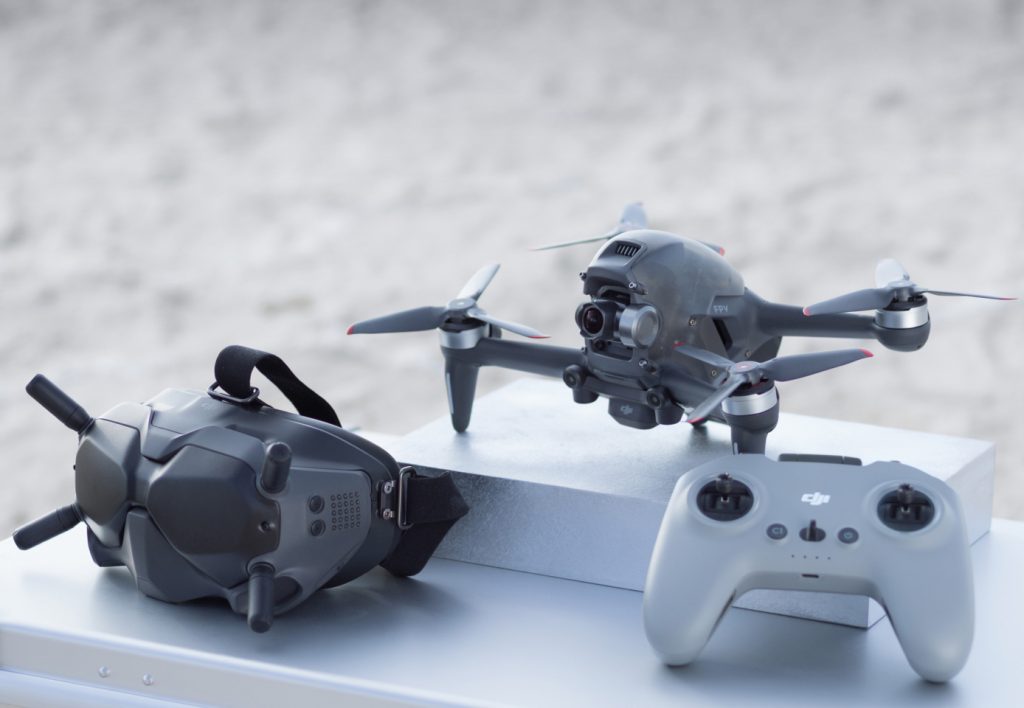
However, the DJI FPV Combo's flight time is limited to around 10 minutes, which can be a drawback for extended use. The high cost of essential accessories adds to the overall expense, and mastering FPV acrobatics presents a considerable challenge. These factors make this drone more complex and niche compared to other DJI models, requiring a learning curve that might not appeal to everyone. Despite these challenges, it offers a unique and thrilling flying experience for those willing to invest.
PROS
- Extremely fun to fly
- Easy to fly for an FPV drone
- Goggles offer great image quality
- Solid transmission
CONS
- Front props visible in footage
- Limited stills photography
- Requires a spotter when flying outdoors
Foldable GPS FPV Drone - Ruko U11S
The Ruko U11S Drone stands out with its GPS-assisted flight and a 90° adjustable 4K camera, offering broader vision and safer indoor flight through optical flow positioning. This drone ensures more stabilized outdoor flights thanks to its GPS positioning, making it a reliable choice for both beginners and seasoned pilots. The easy-to-use controls and beginner-friendly features make it highly accessible, while its foldable and lightweight design enhances its portability, making it perfect for travel enthusiasts.
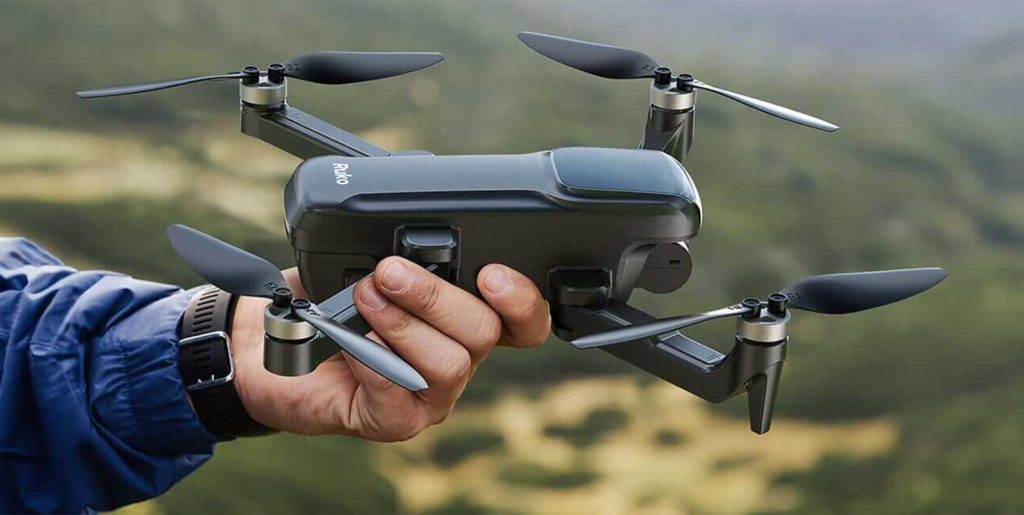
Moreover, the Ruko U11S Drone boasts an extended flight time of 40 minutes, allowing for longer sessions without frequent recharges. Its 4K UHD camera captures clear and detailed images and videos, providing excellent quality for various applications. Users appreciate the built-in Remote ID feature and the drone's great video editing capabilities, which make post-flight processing straightforward. Overall, the Ruko U11S offers a well-rounded package for those looking for a versatile and travel-friendly drone.
PROS
- 4K UHD camera captures clear and detailed images and videos
- Extended flight time of 40 minutes
- Easy-to-use controls and beginner-friendly features
- Foldable and lightweight design
- Great video editing capabilities
CONS
- Limited advanced features compared to higher-end models
- May require additional accessories for optimal performance
Tactic GPS Drones - JOUAV CW-15
The JOUAV CW-15 stands out for its exceptional stability and quiet operation, thanks to its advanced brushless electric motors. Even at an altitude of 300 meters, it generates minimal ground noise, making it ideal for ISR operations. With a 3kg payload capacity, 180-minute flight time, and 61.2km/h cruising speed, the CW-15 is ideal for surveillance, wildlife monitoring, search and rescue, infrastructure inspection, and event coverage. Its open architecture and unified application control development interface allow for extensive customization.
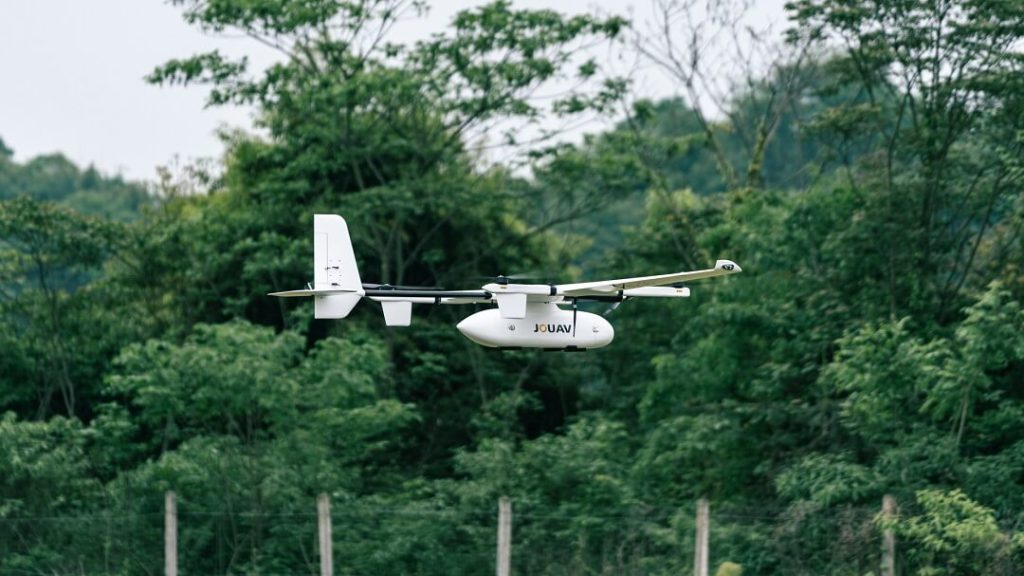
The CW-15 offers a remarkable 50km video transmission range, enhancing operational flexibility. Advanced features like ADS-B situational awareness and the ability to take off and land on moving ships make it suitable for complex tasks. However, these high-end features come with a significant investment, and the drone may require specialized training to fully utilize its capabilities. Despite the higher cost, the JOUAV CW-15 delivers unparalleled performance and customization options for professional users.
PROS
- Minimal ground noise at 300 meters altitude
- Brushless electric motors
- 180-minute maximum flight time
- 61.2km/h cruising speed
- 3kg maximum payload capacity
- 50km video transmission range
- ADS-B situational awareness
- Capable of taking off and landing on moving ships
- Open architecture and customizable control interface
CONS
- High-end features come with a significant investment
- May require training to fully utilize advanced functionalities
Professional Long Range GPS Drones - JOUAV CW-30E
The JOUAV CW-30E excels in long-range missions with its exceptional range and professional-grade performance. Powered by a 4-stroke EFI gasoline engine, it supports a payload of up to 6kg, accommodating high-end cameras and equipment. With a maximum flight time of 480 minutes, a cruising speed of 90km/h, and a range of up to 200km, it covers vast areas effortlessly, making it ideal for search and rescue, surveillance, and infrastructure inspection.
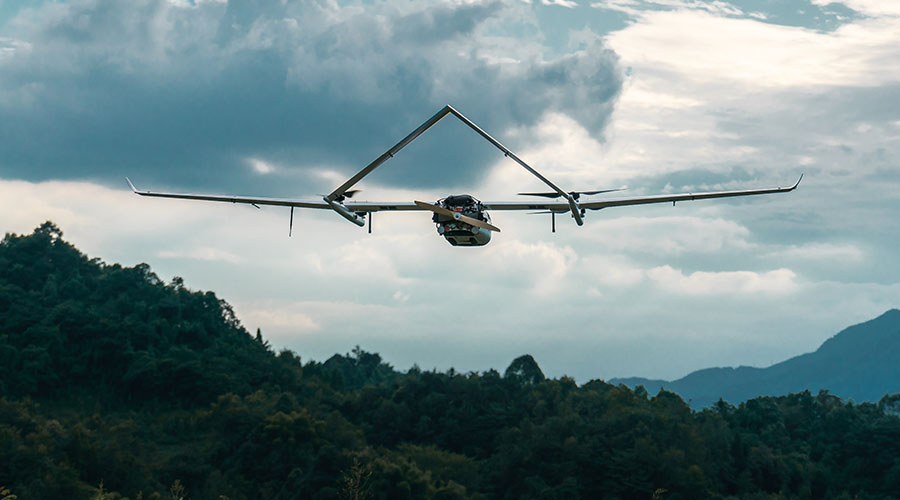
Featuring dual gimbal cameras with a 30x zoom optical sensor and a 640x512 thermal sensor, this long-range drone delivers real-time imaging for critical missions. These advanced cameras provide precise, high-resolution visuals essential for demanding applications. While the CW-30E's premium features come at a higher price, its unmatched flight time, payload capacity, and advanced imaging capabilities make it a top choice for professional drone operations.
PROS
- 480-minute maximum flight time
- 90km/h cruising speed
- 6kg maximum payload capacity
- 200km video transmission range
- ADS-B situational awareness
- Capable of taking off and landing on moving ships
- Dual gimbal cameras with 30x zoom optical sensor and 640x512 thermal sensor
CONS
- Higher price compared to alternatives
- May require specialized training for optimal use
Key Features to Look for in GPS Drones
When shopping for GPS drones, several key features can significantly enhance your flying experience and the capabilities of the drone. Here are some essential features to consider:
Built-in GPS vs. GPS Modules
Built-in GPS: A seamless solution, built-in GPS integrates seamlessly with the drone's flight controller, offering features like return to home, geofencing, and stable flight. This is ideal for beginners and those seeking a user-friendly experience.
GPS Modules: Some drones offer add-on GPS modules for enhanced functionality. This can be a cost-effective option for hobbyists who want to upgrade their existing drone, but it may require some technical expertise for installation.
Camera Quality
Consider your desired resolution (e.g., HD, 4K) and features like live streaming or gimbal stabilization for smooth footage. Higher resolutions offer sharper details, while live streaming allows for real-time viewing of your flight path. A gimbal counteracts shake and vibrations, ensuring smooth video capture.
Brushless Motors
These motors deliver superior efficiency, quieter operation, and longer lifespans compared to brushed motors. For extended flight times and demanding maneuvers, brushless motors are a worthwhile investment.
Folding Designs
Folding designs offer exceptional portability, making them ideal for travel, storage, and on-the-go aerial adventures. These drones can easily fit into backpacks or carrying cases, allowing you to capture breathtaking aerial footage wherever you explore.
Safety and Security Features
GPS Tracking: GPS tracking allows you to monitor your drone's location in real-time, providing peace of mind and helping you locate your drone in case of signal loss.
Return to Home (RTH): This essential safety feature automatically instructs the drone to return to its takeoff point in case of signal loss, low battery, or if you activate the RTH function manually.
Geofencing: Set virtual boundaries to prevent your drone from flying beyond a designated area, ensuring safe operation and preventing accidental flyaways.
Follow Me: This feature allows the drone to autonomously follow you, capturing stunning aerial footage as you explore different locations.
Obstacle Avoidance Systems
Advanced drones incorporate sensors and software that help detect and avoid obstacles during flight. This significantly reduces the risk of collisions, especially for beginners or those flying in complex environments.
There are different levels of obstacle avoidance systems, with some offering basic forward and downward obstacle detection, while others provide a more comprehensive 360-degree obstacle avoidance experience.
How Much Does A Drone with GPS Cost?
When considering the cost of a drone with GPS capabilities, several factors come into play, including the drone's intended use, features, and quality. Here's a breakdown of the typical price ranges you can expect across different categories:

Entry-Level GPS Drones ($100 - $1,000)
For beginners or budget-conscious consumers, entry-level GPS drones offer a cost-effective option. These drones typically range from $100 to $1,000 and come with basic GPS functionality. Key features in this category include:
- Return-to-Home (RTH): Allows the drone to automatically return to its takeoff point.
- Position Hold: This enables the drone to maintain a stable position in the air.
- Basic Camera: Some entry-level drones may include a basic camera for photography and videography.
Mid-Range GPS Drones ($1,000 - $10,000)
Mid-range GPS drones cater to users seeking more advanced features without breaking the bank. These drones typically cost between $1,000 and $10,000 and offer a balance of performance and affordability. Features commonly found in this category include:
- Improved Flight Time: Longer battery life for extended flight sessions.
- Better Camera Quality: Enhanced camera capabilities for higher-resolution photos and videos.
- Additional Flight Modes: Options like Active Track (auto-follow) or Waypoints for more dynamic flight experiences.
- Precise GPS Systems: Enhanced GPS functionality for better accuracy and stability during flights.
High-End GPS Drones ($50,000+)
Professionals and enthusiasts looking for top-of-the-line performance and features opt for high-end GPS drones, which can range from $50,000 to several thousand dollars. These drones offer cutting-edge technology and capabilities, including:
- High-Resolution Cameras: Capture stunning aerial footage with advanced camera systems.
- Long Flight Times: Extended battery life for prolonged flights and mission durations.
- Advanced Flight Modes: Complex flight modes like obstacle avoidance, follow-me, and autonomous flight planning.
- Sophisticated GPS Systems: Some high-end drones feature Real-Time Kinematic (RTK) positioning, providing centimeter-level accuracy for precise mapping and surveying tasks.
How Accurate Is The GPS On A Drone?
The accuracy of GPS on a drone can vary depending on several factors, but it typically falls within a range of +/- 1 meter to +/- 5 meters horizontally and +/- 3 meters to +/- 10 meters vertically [1, 2]. Here's a breakdown:
Limitations of Drone GPS:
- Civilian vs. High-Accuracy GPS: Drones typically use consumer-grade GPS modules, which are less accurate than the high-precision systems used in surveying equipment.
- Satellite Availability: The number of satellites a drone can lock onto affects accuracy. Fewer satellites in view can lead to a weaker signal and decreased precision.
- Environmental factors: Dense objects like buildings, trees, or even strong winds can interfere with the GPS signal, impacting accuracy.
How RTK Improves Drone GPS Accuracy?
While GPS is a marvel of modern technology, it's not perfect. Many factors, from satellite reception to atmospheric interference, can affect a drone's GPS accuracy.
The good news? Modern drones like the JOUAV CW-15 are equipped with advanced systems like RTK (Real-Time Kinematic) GPS to combat these inaccuracies and deliver pinpoint precision.
RTK drones work by utilizing a network of fixed base stations with known precise locations. Here's how they work:
1. Ground Control Station Setup: A crucial element is a fixed base station with a precisely surveyed location. This base station continuously receives raw GPS data from satellites.
2. Real-Time Differential Correction: The base station removes inherent errors and calculates real-time corrections for the received GPS data.
3. Drone Communication and Correction Application: The drone maintains a constant communication link with the base station, receiving these differential corrections.
4. Enhanced Accuracy on the Fly: The drone's onboard computer factors in the real-time corrections, effectively canceling out errors and achieving centimeter-level positioning accuracy.
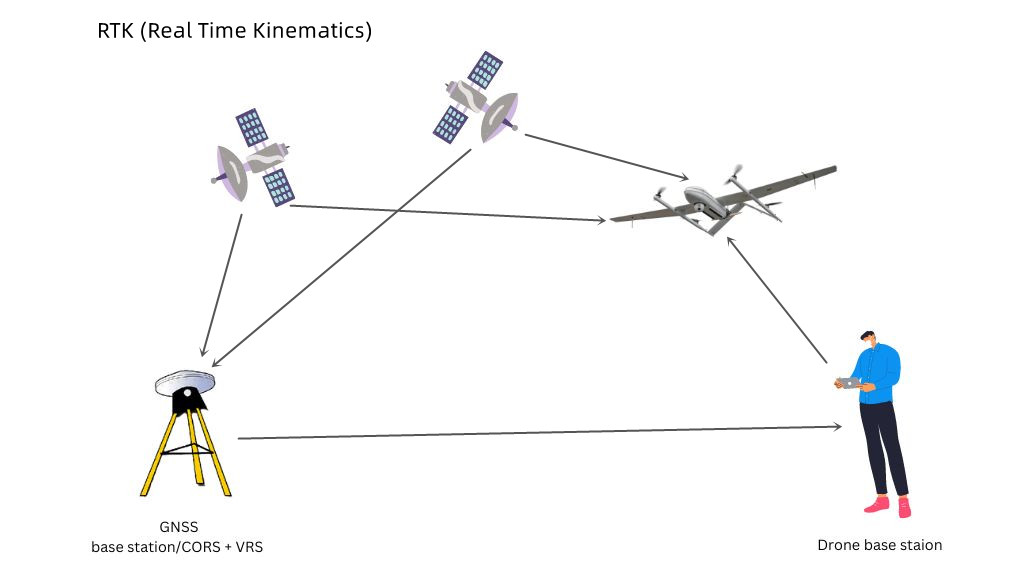
Do All Drones Need GPS To Fly?
While GPS-equipped drones offer numerous advantages, they may not always be essential for every user. Here are factors to consider when deciding if GPS is necessary for your drone:
Cost Considerations
GPS technology adds to the cost of a drone. For beginners or hobbyists starting out, opting for a non-GPS drone can be more budget-friendly. This allows you to learn the fundamentals of drone flight without a substantial initial investment.
Battery Life
GPS modules consume power, affecting the drone's battery life. If you require longer flight times, choosing a drone without GPS can be advantageous. These drones often offer extended flight durations on a single charge, providing more airtime for your activities.
Indoor Use
For indoor drone operations, GPS functionality may not be crucial. Indoor environments often have weak or absent GPS signals, rendering GPS features ineffective. In such cases, a drone without GPS can perform just as effectively or even better than a GPS-equipped drone.
How Can Drones Fly Without GPS?
While GPS is a common navigation tool for drones, it's not always reliable. Drones can struggle to fly in environments with weak GPS signals, like indoors or near buildings. Additionally, some sensitive locations may restrict GPS use due to security concerns (though GPS itself doesn't transmit data).
The key to GPS-denied flight lies in onboard optical sensors. Acting as the drone's eyes, these sensors provide real-time data on the drone's surroundings, helping it maintain stability and navigate with precision. They gather information on altitude, attitude, and location, allowing the drone to hover and maneuver as if it were receiving GPS signals.
Additionally, LiDAR (Light Detection and Ranging) sensors enhance the drone's navigation capabilities through SLAM (simultaneous localization and mapping). LiDAR technology sends laser pulses to create a 3D map of the environment, which is especially useful for navigating complex and confined spaces.
FAQ
How Far Can a GPS Drone Fly?
The maximum flight range of a GPS drone depends on several factors, like battery size, weather conditions, and even regulations. Here's a general breakdown:
- Toy drones: Up to 100 meters
- Hobby drones: Up to 4 kilometers
- Multi-rotor commercial drones: Up to 15 kilometers
- Fixed-wing commercial drones: Up to 600 kilometers (exceptional range)
What Are Some Challenges Faced While Using GPS Drones?
While GPS offers a convenient and effective navigation tool for drones, it's not without its limitations. Here are some key challenges faced by pilots who rely on GPS-dependent drones:
- Limited Signal Environments: GPS struggles in areas with weak reception, such as indoors, under dense foliage, or near tall buildings. Signal loss can lead to erratic flight behavior or a complete loss of control.
- Vulnerability to Interference: GPS signals can be disrupted by intentional or unintentional jamming, causing navigation issues or even crashes.
- Battery Drain: The constant use of GPS can drain a drone's battery faster, limiting flight time.
- Security Concerns (Perceived): Although GPS itself doesn't require an internet connection, some users worry about potential security vulnerabilities associated with relying on external satellite signals.
What Happens If A Drone Loses Its GPS Connection?
Drones rely heavily on GPS for navigation and features like Return to Home (RTH). But what happens if the GPS signal sputters or cuts out entirely? While it's not ideal, most drones are equipped to handle temporary GPS loss.
The drone's behavior depends on pre-programmed failsafe settings and the connection status with the controller. If GPS goes out but the controller signal remains strong, the drone will likely switch to a mode called "Attitude Hold" (ATTI).
In ATTI mode, the drone relies on internal sensors to maintain its altitude and angle, but it can drift with wind since it lacks positional awareness. Pilots can still control the drone in ATTI mode, but it requires more skill to keep it steady.
If both GPS and controller connections are lost, the failsafe settings come into play. These are typically programmed for the drone to either hover in place, land immediately or attempt an RTH using the last known GPS location (unreliable without a signal).



